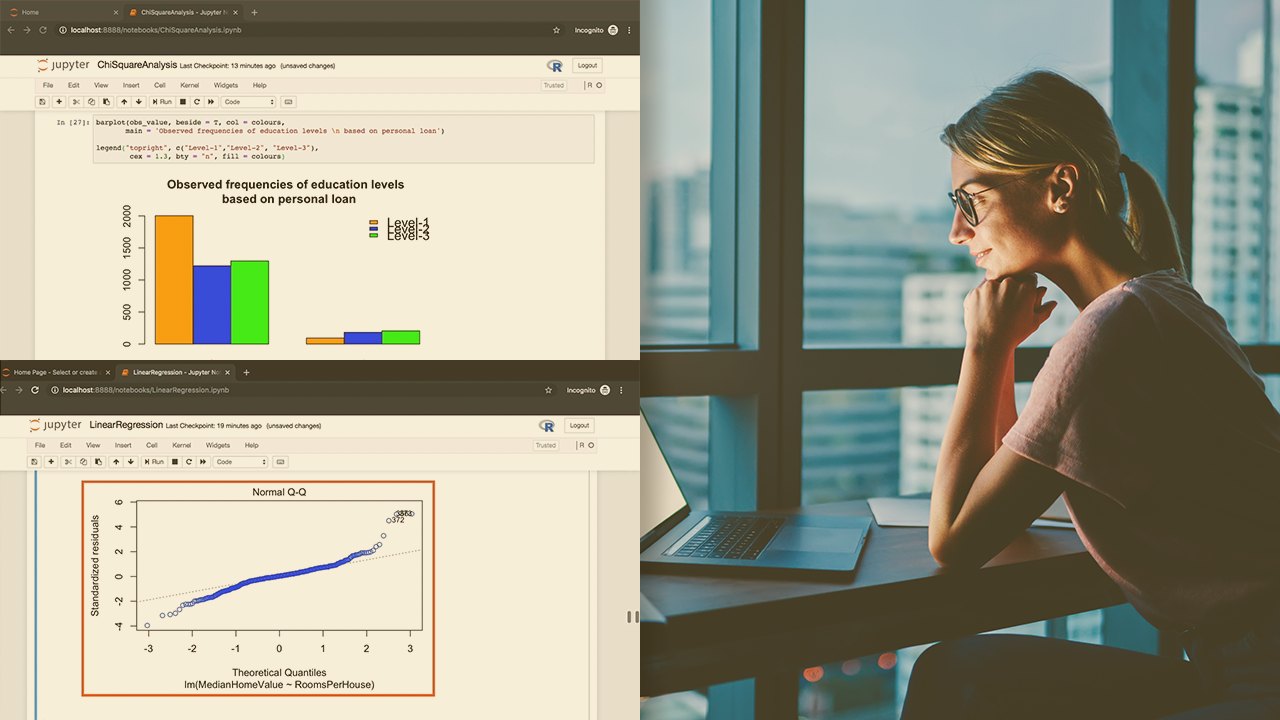- Course
Building Statistical Summaries with R
This course covers inferential statistics techniques. Learn advanced techniques to compare means across categories, predictive models for regression and classification, and A/B testing to perform randomized experiments on two versions of a variable.

- Course
Building Statistical Summaries with R
This course covers inferential statistics techniques. Learn advanced techniques to compare means across categories, predictive models for regression and classification, and A/B testing to perform randomized experiments on two versions of a variable.
Get started today
Access this course and other top-rated tech content with one of our business plans.
Try this course for free
Access this course and other top-rated tech content with one of our individual plans.
This course is included in the libraries shown below:
- Data
What you'll learn
The tools of machine learning - algorithms, solution techniques, and even neural network architectures, are becoming commoditized. Everyone is using the same tools these days, so your edge needs to come from how well you adapt those tools to your data. Today, more than ever, it is important that you really know your data well.
In this course, Building Statistical Summaries with R, you will gain the ability to harness the full power of inferential statistics, which are truly richly supported in R.
First, you will learn how hypothesis testing, which is the foundation of inferential statistics, helps posit and test assumptions about data. Next, you will discover how the classic t-test can be used in a variety of common scenarios around estimating means. You will also learn about related tests such as the Z-test, the Pearson’s Chi-squared test, Levene’s test and Welch’s t-test for dealing with populations that have unequal variances.
Finally, you will round out your knowledge by using ANOVA, a powerful statistical technique used to measure statistical properties across different categories of data. Along the way, you will explore several variants of ANOVA, including one-way, two-way, Kruskal-Wallis, and Welch’s ANOVA.
You will build predictive models using linear regression and classification and finally, you will understand A/B testing, and implement both the frequentist and the Bayesian approaches to implement this incredibly powerful technique.
When you’re finished with this course, you will have the skills and knowledge to use powerful techniques from hypothesis testing, including t-tests, ANOVA and Bayesian A/B testing in order to measure the strength of statistical relationships within your data.
Building Statistical Summaries with R
-
Version Check | 15s
-
Prerequisites and Course Outline | 1m 44s
-
The Role of Statistics in Understanding Data | 3m 25s
-
Hypothesis Testing | 7m 44s
-
P-values, Power, and Alpha of Statistical Tests | 2m 33s
-
Introducing the T-test | 3m 29s
-
The T-test for Different Use Cases | 5m 14s
-
The Z-test | 2m 34s
-
One-way ANOVA: Assumptions and Alternatives | 6m 3s
-
Two-way ANOVA and Assumptions | 2m 16s
-
Pearsons Chi2 Test | 3m 48s

